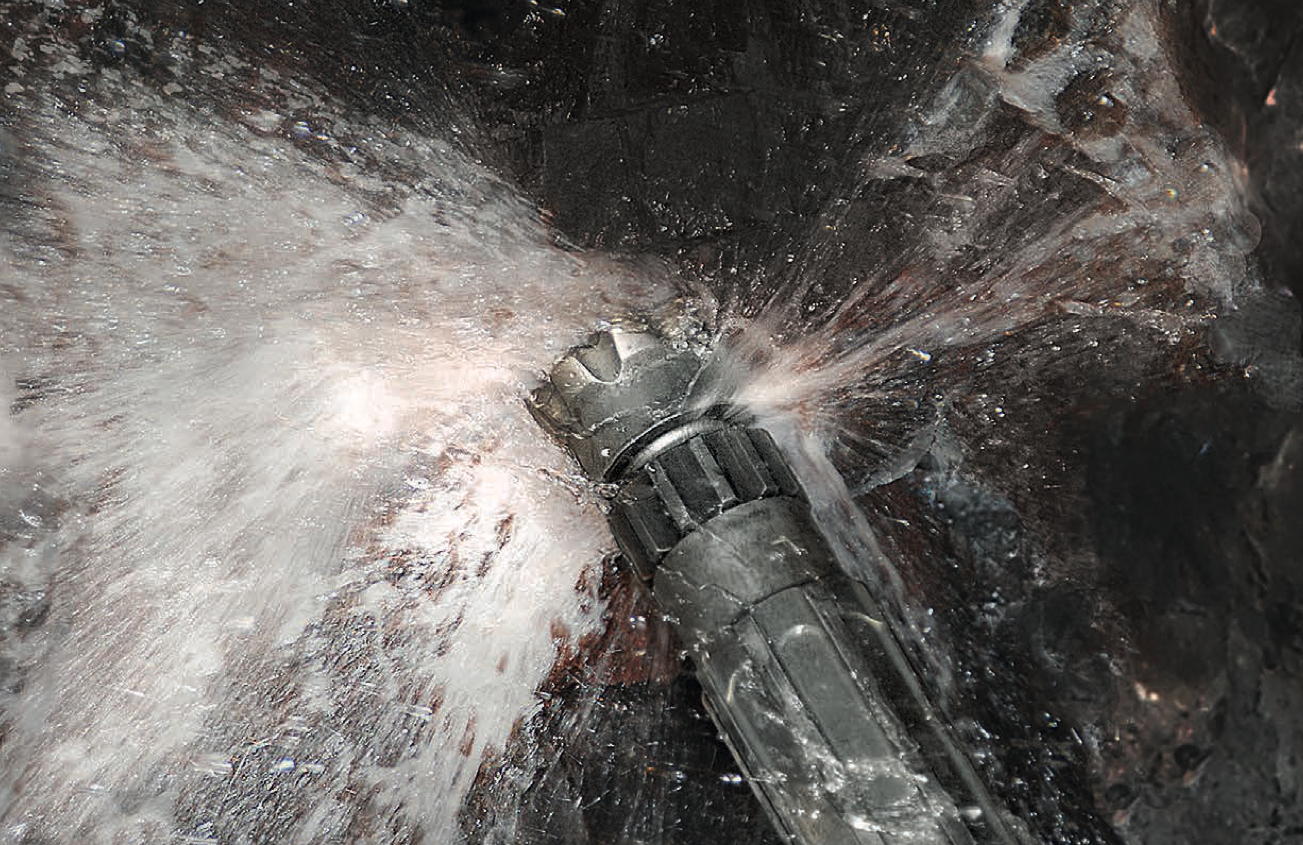Degasification holes can considerably slow down production, but using Wassara-hammers can significantly increase the productivity with a penetration rate of up to 5 times higher than traditional systems.

Most underground coal mines suffer from methane gas releases from coal or surrounding rock strata, both during and after the mining process. Methane gas release represents a severe mining hazard and extensive ventilation is crucial to provide a safe work enviroment.
For this reason, up to 200 metre long degasification holes are usually drilled. Since top hammers cannot handle such length and air DTH-hammers cannot be used due to the risk of explosions, slow and unproductive rotary non-percussive drilling is used.
Wassara-hammer on the other hand uses high-pressure water to power the hammer, thus eliminating the risk of explosions. This makes it the ideal drilling method for degasification holes.
Additionally, the rate of penetration is usually up to 5 times as high as the traditional rotary non-percussive drilling systems, even when the same drill rig is used.
Many underground coal mines are also associated with unstable rock formation which can cause the degasification hole to collapse. A collapsed degasification needs to be redrilled immediatly since it represents a potential hazard in the form of insufficient ventilation.
With the Wassara-hammer and system, a symmetric or under-reamer casing system can be installed in the fractured ground to prevent the hole from collapsing.
Using Wassara-hammers therefore increases the productivity even further since fewer holes needs to be drilled.